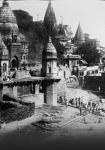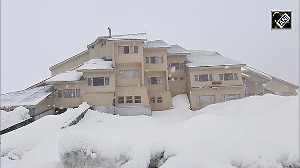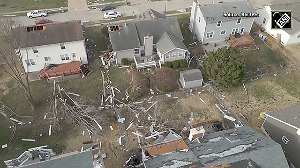Space shuttle Discovery, with seven astronauts onboard, landed at the Edwards Air Force Base in California successfully, after a two-week stay in space, and ending days of anxiety about the safe return of the craft which had some parts of thermal blanket dangling below its cockpit.
With the spacecraft's safe landing, NASA's mission came to a happy ending unlike the 2003 Columbia disaster in which India-born Kalpana Chawla was killed along with her six colleagues aboard the shuttle.
In the two weeks in space, Discovery's crew demonstrated new methods to inspect and repair the shuttle while in orbit, NASA's web site said. The crew also delivered supplies, outfitted and performed maintenance on the International Space Station, mostly during three spacewalks.
Hurtling to earth at a speed of over 27,000 km per hour, the spacecraft aligned itself to the three-mile landing strip, touching base at 1742 IST.
"We are happy to be back," mission commander Eileen Collins radioed to mission control on landing.
"Congratulations on a truly spectacular test flight," said the mission control commander who named each member of
the seven crew. "Welcome home, friends."
This was NASA's first mission to space since the loss of Columbia in February 2003.
The seven-member crew's return to earth was delayed by nearly 27 hours and the shuttle was diverted to the Edwards
Air Base in the Mojave desert as bad weather at the Kennedy Space Center thwarted plans of touchdown at the spacecraft's home base.
NASA's decision to land in California came hours before the astronauts were to begin re-entry into the atmosphere, the
crucial stage when Columbia had disintegrated.
The crew had admitted that they had memories of the 2003 disaster as they prepared for their return to earth.
Chunks of insulation foam fell from the external tank of the shuttle when it roared into space on July 26. The loss of
the thermal blanket had caused no serious damage and mission managers had given a go-ahead for the landing.
The space agency has now grounded its entire fleet of spacecraft until the problem is fixed.
The repairs carried out on the shuttle during the mission's three spacewalks have generated a huge amount of data which would help NASA develop a safer spacecraft.
The mission was largely designed to test changes made to the shuttle since the Columbia disaster, including
improvements that were meant to prevent foam from breaking off upon launch.
Besides testing new repair techniques, the astronauts also re-stocked the International Space Station with 12 tonnes
of equipment, and cleared it of waste.






 © 2025
© 2025